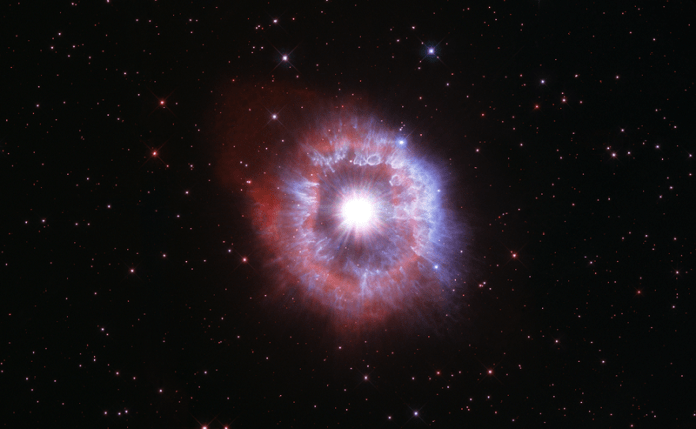NASA has released a stunning new image, taken by the James Webb Space Telescope, of a massive star about to explode.
The James Webb Space Telescope, the most powerful space observatory ever, documented a unique view of the Wolf-Rayet star, one of the brightest, largest and shortest-lived stars.
Thanks to its powerful infrared instruments, the telescope revealed unparalleled detail on the star Wolf Rayet 124 (WR 124), located 15,000 light-years away. The star is 30 times the mass of the sun, and has so far emitted material equivalent to 10 suns, reports Al-Rai daily.
Cosmic dust is formed when the ejected gas cools and travels away from the star. The James Webb telescope can document this as it shines in infrared light.
Astronomers are interested in the beginning of cosmic dust, because it could have survived a “supernova” explosion and added to the overall “dust mass” of the universe.
A “supernova” is an astronomical event that occurs during the last evolutionary stages of a massive star’s life, in which a massive starburst occurs.
Dust is essential to how the universe works, as it shields young stars, collects to help form planets, and provides a surface for molecules to form and clump together, including those that make up the source of life on Earth.

















